Craving authentic Parma Ham? Discover where to buy Parma Ham, explore delicious Parma Ham recipes, compare Parma Ham prices, and learn about Parma Ham origin. Your complete guide to Italys prized prosciutto!
Table of Contents
- Rooted in Time: The Ancient Origins of Parma Ham
- The Artisans Touch: The Meticulous Production Process
- Bringing Parma Home: Classic Serving & Recipe Inspiration
- A Taste of Place: Parma Ham & the Emilia-Romagna Region
- Top Restaurants for Authentic Prosciutto di Parma Experiences
- Parma Ham Q&A: Your Questions Answered
Rooted in Time: The Ancient Origins of Parma Ham
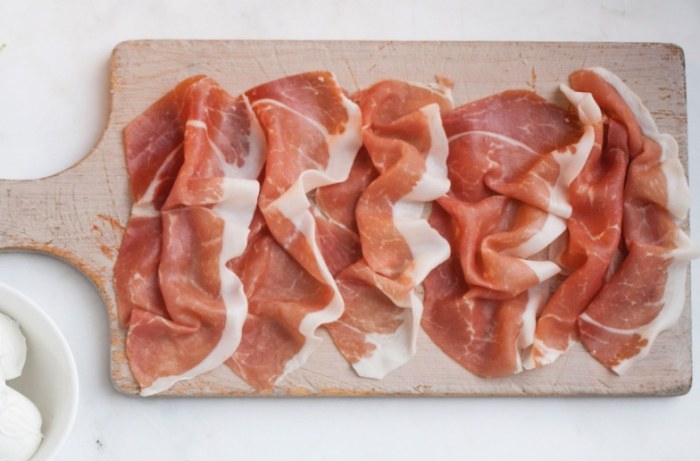
Parma Ham’s story stretches back millennia, woven the very fabric of the Emilia-Romagna region. Its roots lie deep in the practical need to preserve precious pork through the seasons.
-
Celtic and Roman Foundations
Long before it bore the citys name, Celtic tribes inhabiting the Po River Valley practiced air-drying pork legs. The Romans, masters of preservation, refined these techniques, appreciating the regions unique cold, dry winters and mild, breezy summers – natures perfect curing chamber. Salt from nearby Salsomaggiore became a key ingredient in this burgeoning art. -
Medieval Monasteries & Noble Tables
During the Middle Ages, Benedictine and Cistercian monasteries became crucial centers of knowledge. Monks meticulously documented and perfected the salting and aging processes, elevating it from mere sustenance to a prized artisan product. Prosciutto graced the tables of nobility in nearby duchies like Parma and Modena, solidifying its reputation. -
The Birth of a Protected Identity (1963)
Recognizing the need to safeguard this unique heritage and quality, the Consorzio del Prosciutto di Parma (Parma Ham Consortium) was established in 1963. This pivotal moment formalized the strict production rules and geographical boundaries that define genuine Prosciutto di Parma today. The iconic five-point ducal crown brand, burned onto the skin, became the global guarantee of authenticity and adherence to centuries of tradition.
The Artisans Touch: The Meticulous Production Process
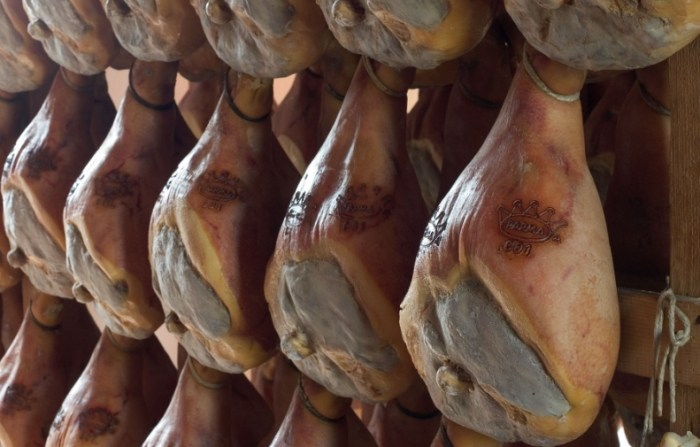
Prosciutto di Parma isnt made; its coaxed existence through time-honored rituals demanding patience and precision. Every step is governed by the Consortiums strict DOP (Protected Designation of Origin) regulations.
-
The Sacred Pig: Heritage Breeds & Strict Diet
The journey begins with the pig. Only specifically ed breeds (predominantly Large White, Landrace, and Duroc) raised in ten approved central-northern Italian regions qualify. Their diet is paramount: a carefully controlled mix of grains (corn, barley), whey from Parmigiano Reggiano cheese production, and legumes. No additives, hormones, or meat meal are permitted. This diet imparts the characteristic sweetness and consistent fat marbling crucial for flavor and texture. -
Salting: The Foundation of Flavor & Preservation
The fresh legs (weighing at least 12kg each) arrive at the curing facility. Master salters apply nothing but pure sea salt. This crucial step involves massaging the salt the meat, particularly around the exposed muscle areas. The hams are then layered in cold rooms (1-4°C, 85-95% humidity). After about a week, they are de-salted, brushed clean, and salted again lightly. The entire salting period lasts approximately 70-90 days, depending on weight. Only salt is used – no nitrates, nitrites, smoke, or additives are ever permitted. -
Resting & Equalization: Letting Nature Work
After salting, the hams move to refrigerated resting rooms (1-5°C, 75-85% humidity) for 60-80 days. This allows the salt to distribute evenly throughout the muscle tissue and initiates the biochemical processes crucial for developing the characteristic aroma and flavor. The meat begins to lose moisture gradually. -
The Magic of Aging: Transformation Through Time
The slow dance with time truly begins in the aging cellars. Hams are transferred to well-ventilated rooms with large windows, allowing the natural mountain breezes of the Parma hills to flow through. Temperature and humidity fluctuate with the seasons naturally. Here, the hams hang from traditional wooden frames. Over a minimum of 12 months (often 18, 24, or even 36+ months), enzymes break down proteins and fats, concentrating flavors, developing complex aromas (nutty, sweet, floral), and achieving the signature melt-in-the-mouth texture. Master testers periodically check progress by ing a needle made from horse bone the ham and smelling it to assess aroma development. Fat naturally covers the exposed muscle, protecting it during this lengthy process. -
Firebrand & Final Inspection: The Seal of Approval
Only hams that have matured for at least 12 months and pass the final, rigorous inspection by the Consorzio’s experts earn the right to bear the coveted five-point Ducal Crown firebrand. This mark is the ultimate guarantee of DOP compliance and authentic Prosciutto di Parma quality. The ham is then ready for market.
Bringing Parma Home: Classic Serving & Recipe Inspiration

Experiencing Prosciutto di Parma is about simplicity allowing quality to shine. Knowing how to serve it unlocks its full potential.
-
The Perfect Slice: Transparency is Key
Thinness is non-negotiable. Ideally sliced paper-thin by hand using a long, flexible knife. Machine slicing often compresses the delicate meat. Hand-slicing reveals its supple texture and allows the fat to melt instantly upon contact with the tongue. Look for slices that are translucent, showcasing the delicate rosy hue of the lean meat and the glistening, ivory-white fat marbling. The slices should be large enough to drape elegantly. -
Quintessential Pairings: Elevating Simplicity
- Bread: Serve slightly chilled slices draped over warm, unsalted breadsticks (grissini), chunks of rustic Italian bread (like michetta), or fresh, soft Focaccia di Recco (if available). The contrast is divine.
- Fruit: Its natural sweetness pairs beautifully with ripe figs, melon (especially cantaloupe), or sliced pears. The fruits juice complements the hams saltiness.
- Cheese: Create an antipasto masterpiece alongside Parmigiano Reggiano chunks (the ultimate regional pairing), creamy mozzarella di bufala, or fresh ricotta. The salty-fatty-sweet-creamy interplay is irresistible.
- Minimalism: Often, the best way is simply on its own, at room temperature (remove from fridge 20-30 minutes before serving), allowing the pure, complex flavors to take center stage.
-
Beyond Antipasto: Simple Recipe Ideas
- Prosciutto e Melone: Arrange 4-5 slices draping over a wedge of ripe cantaloupe. A timeless classic.
- Parma Ham-Wrapped Asparagus: Blanch thick asparagus spears, cool, wrap each spear (or bundle of 3 thin ones) with a slice of prosciutto. Serve at room temperature.
- Simple Pasta Toss: Toss hot, drained pasta (like tagliatelle or pappardelle) with a knob of butter, a splash of starchy pasta water, freshly grated Parmigiano Reggiano, and torn pieces of Prosciutto di Parma. The residual heat gently cooks the ham. Finish with black pepper.
- Savory Galette: Spread a layer of soft goat cheese or ricotta mixed with herbs over rolled-out puff pastry. Top with overlapping slices of prosciutto before baking until golden. Garnish with arugula after baking.
A Taste of Place: Parma Ham & the Emilia-Romagna Region
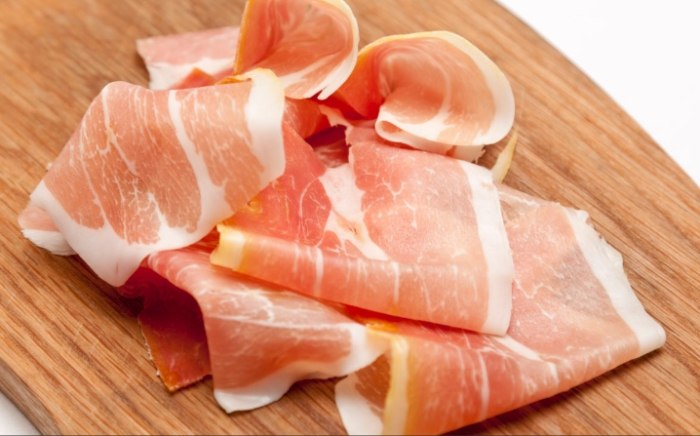
Prosciutto di Parma is inseparable from its birthplace. The unique environment shapes its character.
-
The Sweet Air of the Parma Hills
The microclimate south of Parma is absolutely vital. The dry breezes descending from the Apennines meet the humid air rising from the Po Valley, creating conditions perfect for slow, natural drying without excessive moisture that could cause spoilage. This specific airflow cannot be replicated elsewhere. -
Synergy with Parmigiano Reggiano
The connection is profound. Pigs destined for Prosciutto di Parma are fed the whey leftover from producing Parmigiano Reggiano cheese. This sustainable practice imparts a unique sweetness and complexity to the pork fat. Both products share the same DOP geographical area and represent the pinnacle of Emilia-Romagnas gastronomy. -
Cultural Icon: Festivals & Traditions
Parma Ham is celebrated locally. The Festa del Prosciutto di Parma (held in Langhirano, the heart of production, usually in September) is a major event featuring tastings, tours, markets, and demonstrations. Visiting a prosciuttificio (ham factory) for a guided tour is a must-do cultural experience, offering deep insight the craftsmanship.
Top Restaurants for Authentic Prosciutto di Parma Experiences
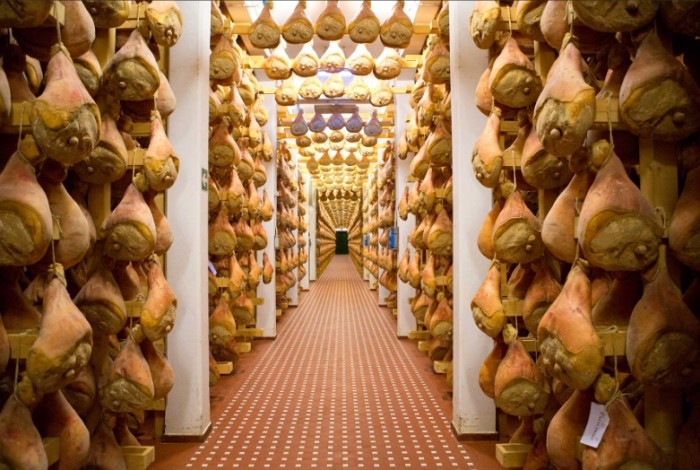
While enjoying it simply at home is wonderful, savoring it expertly served in its homeland is unforgettable. Here are standout venues:
Top Restaurants for Prosciutto di Parma in Emilia-Romagna
| Restaurant Name | Location | Specialty Experience | Why Its Special |
|---|---|---|---|
| Trattoria Corrieri | Parma | Classic Antipasto Misti featuring hand-carved Parma Ham | Historic ambiance, traditional Emilian cuisine focus |
| Antica Moka | Langhirano | Extensive tasting platters, proximity to producers | Epicenter of production, expertise in showcasing ham |
| Al Vedel | Modena | Exceptional Culatello & Hand-Carved Parma Ham | Focus on premium cured meats, refined presentation |
| Osteria Francescana | Modena | Signature "Cinque età del Parmigiano Reggiano" | World-renowned, innovative tasting menu featuring ham |
-
Parmas Historic Haunts
Trattoria Corrieri (Parma): Steeped in history (since 1805), this bustling trattoria offers an impeccable Antipasto Misto Emiliano, featuring beautifully hand-carved Prosciutto di Parma alongside other regional classics like Culatello and Torta Fritta. The ambiance is authentic and lively. -
In the Heart of Ham Country (Langhirano)
Antica Moka (Langhirano): Located literally in the epicenter of production, this restaurant specializes in showcasing Prosciutto di Parma at its finest. Expect expertly sliced ham as a centerpiece, often offering extensive tasting platters alongside traditional dishes. Their knowledge and sourcing are unparalleled here. -
Modenas Meat Masters
Al Vedel (Modena): While renowned for Modenas own treasures (like Aceto Balsamico Tradizionale), Al Vedel excels in cured meats. Their ion of Culatello di Zibello is legendary, but their Prosciutto di Parma, served simply and perfectly sliced, is also exceptional. Expect refined presentation and deep expertise. Osteria Francescana (Modena): Massimo Botturas three-Michelin-starred temple of modern Italian cuisine. While an avant-garde experience, Prosciutto di Parma often features, sometimes in unexpected but brilliant ways within his tasting menus (like the famous "Cinque età del Parmigiano Reggiano" where aged cheeses meet ham textures). A pilgrimage for serious gastronomes.
Parma Ham Q&A: Your Questions Answered
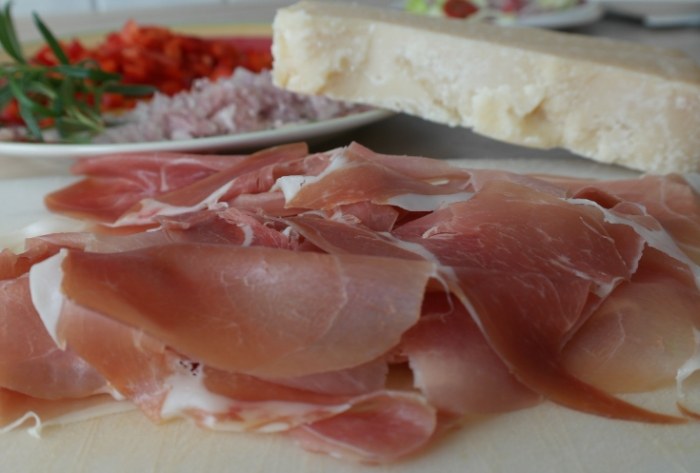
-
1. Is Parma ham the same as Prosciutto?
No, but it is a type of Prosciutto. "Prosciutto" is the Italian word for "ham," specifically referring to dry-cured ham. Its a broad category. Prosciutto di Parma is a highly specific, protected type of prosciutto (DOP) produced only in a defined area around Parma, Italy, following incredibly strict traditional methods. Think of "Prosciutto" as the category (like "cheese") and "Prosciutto di Parma" as a specific, premium variety within that category (like "Parmigiano Reggiano" is a specific cheese). Other famous prosciutti include Prosciutto di San Daniele (from Friuli-Venezia Giulia) and Prosciutto Toscano.
-
2. What is Parma ham called in America?
In the United States, it is most commonly called Parma Ham or Prosciutto di Parma. You will often see both names used on packaging and menus. The full Italian name "Prosciutto di Parma" is widely recognized and used, especially by retailers and restaurants emphasizing authenticity. It is not typically generically labeled just as "Prosciutto" in fine contexts, to distinguish it from other types.
-
3. What exactly is Parma ham?
Parma Ham (Prosciutto di Parma) is a specific, premium dry-cured ham originating from the Parma region of Italy. It holds Protected Designation of Origin (DOP) status. This means:
- Specific Pigs: Made only from the hind legs of specially ed large pigs (Large White, Landrace, Duroc crosses) born and raised in ten approved central-northern Italian regions on a controlled diet (grains, whey from Parmigiano Reggiano production).
- Specific Area: Entirely produced (salting, resting, aging) within a strictly defined geographical zone south of Parma.
- Natural Process: Cured using only sea salt (no nitrates, nitrites, smoke, additives).
- Extended Aging: Aged a minimum of 12 months, often much longer (avg. 18-24 months), developing complex flavor and texture.
- Quality Seal: Identified by the firebrand of the five-pointed Ducal Crown applied after passing final inspection. The result is a sweet, delicate, melt-in-the-mouth ham with a distinctive rosy color and complex nutty, savory aroma.
-
4. Why is Parma ham expensive?
Several factors justify the premium price of authentic Prosciutto di Parma:
- Rigorous Standards & Traceability: The DOP regulations govern every step (pig breed, diet, origin, processing area, ingredients, aging time), ensuring quality but adding significant cost (monitoring, certification, tracing).
- Time-Intensive Production: The minimum aging period is 12 months (much longer than many hams), often extending to 24 or 36 months. This ties up capital and requires vast aging space with careful environmental control. Significant weight loss occurs (up to 30%), concentrating flavors but reducing yield.
- Limited Ingredient, High Labor: Only sea salt is used, placing immense importance on the skill and experience of the master salters and testers throughout the process. Hand-slicing also requires specialized skill. Feeding pigs specific diets (including Parmigiano whey) adds cost.
- Quality of Raw Material: Using large, heavy legs from specially bred and raised pigs is inherently more expensive than commodity pork.
- Global Demand & Brand Value: As a globally recognized symbol of quality and luxury, its reputation commands a higher price point reflecting its status and heritage.
About the author:I’m Frank, the traveler and foodie behind Italy Travel Guide. For over a decade, I’ve been exploring every corner of Italy—from the canals of Venice to the lemon groves of the Amalfi Coast—sharing the best hidden gems, authentic trattorias, and charming boutique hotels along the way. My passion? Helping you experience Italy like a local, whether that means finding the perfect tiramisu in Florence, navigating Italy’s train system like a pro, or uncovering that tiny family-run vineyard in Tuscany. Join me as we dive la dolce vita, one unforgettable adventure at a time!
